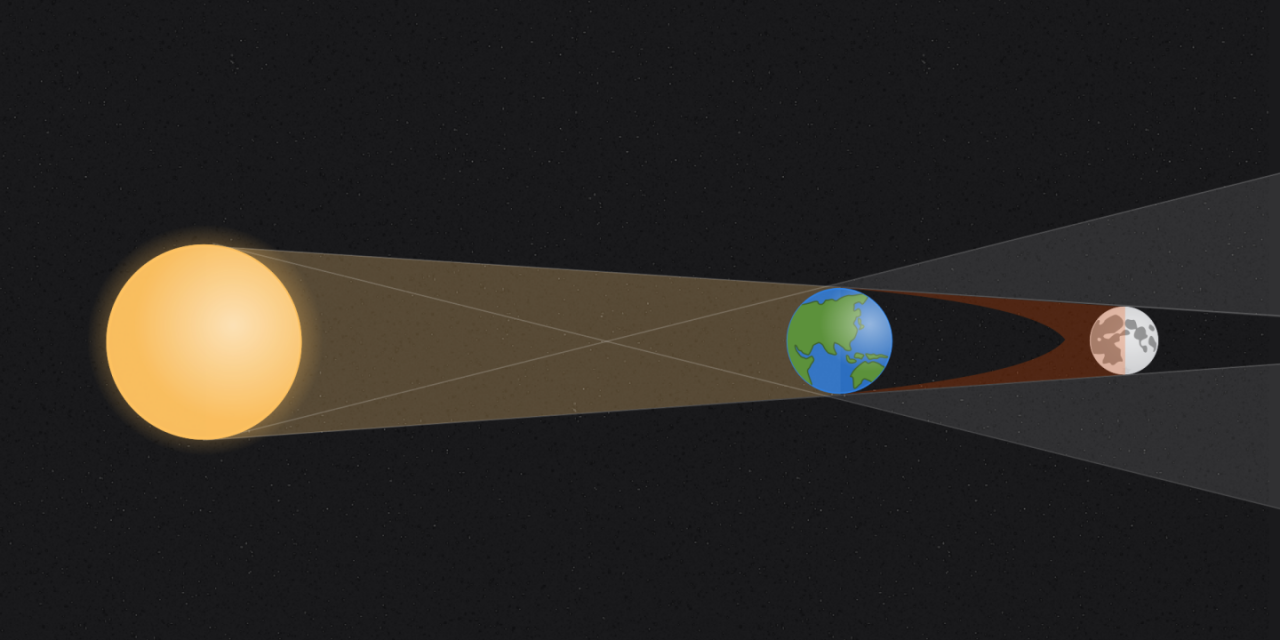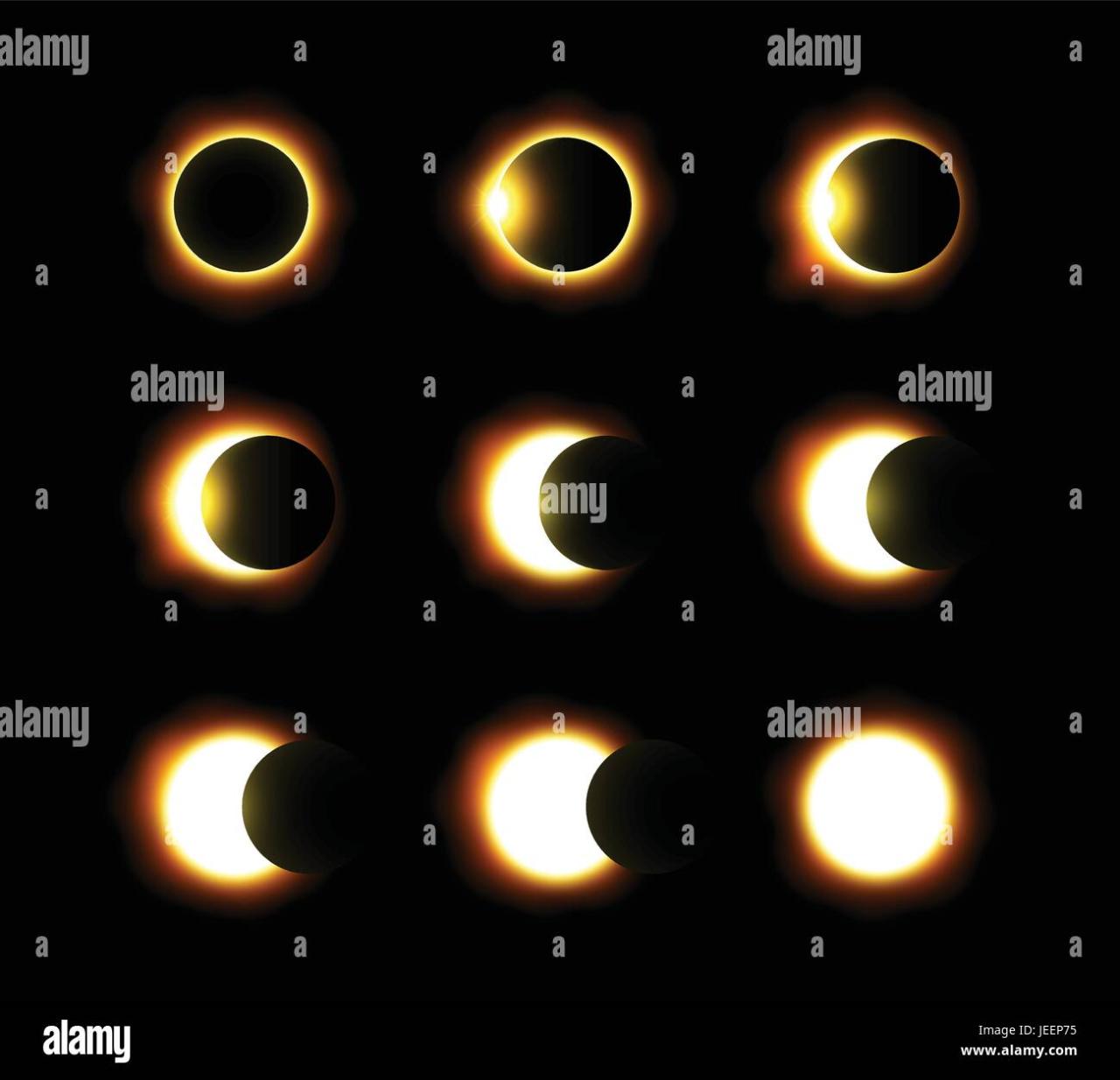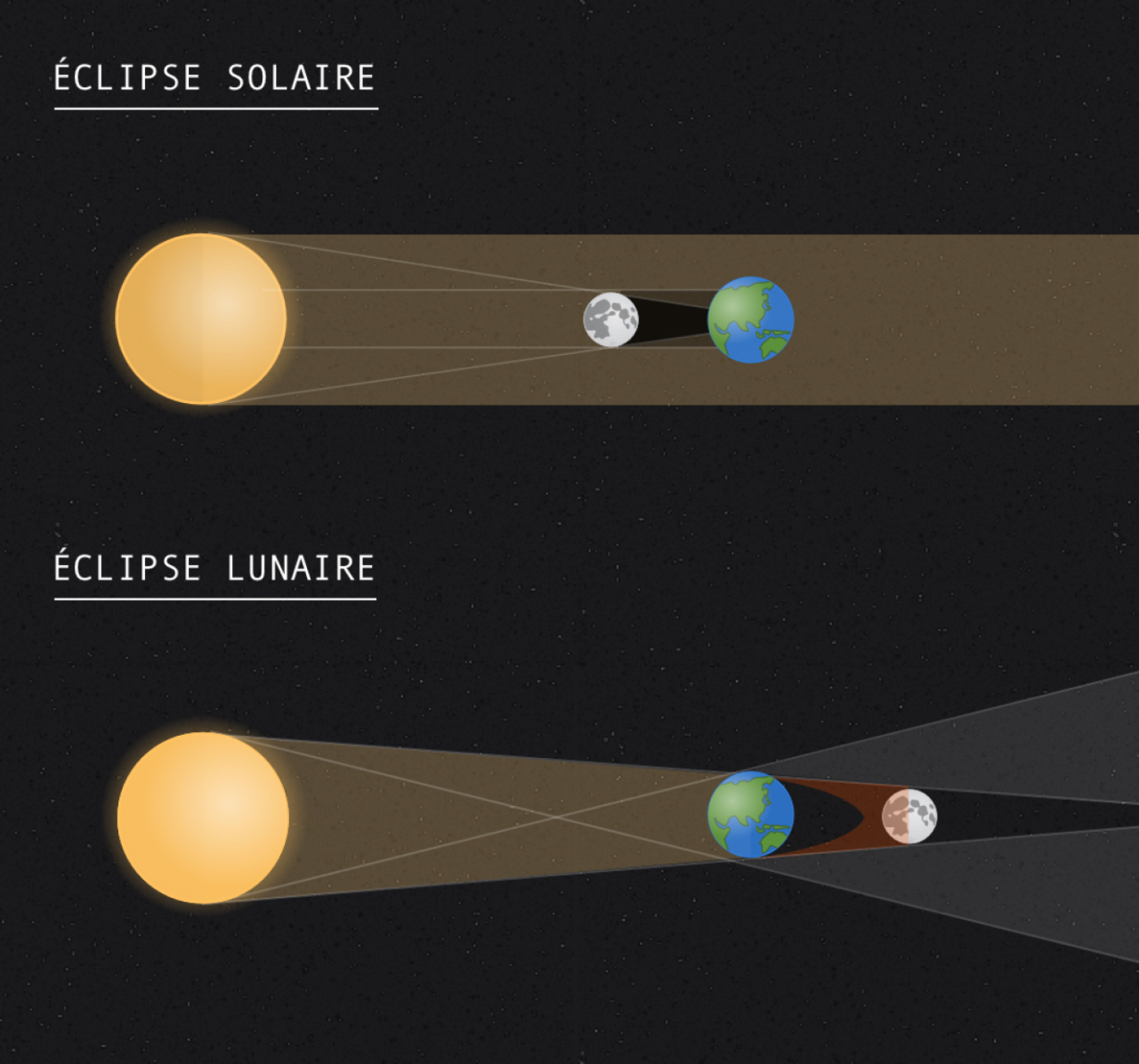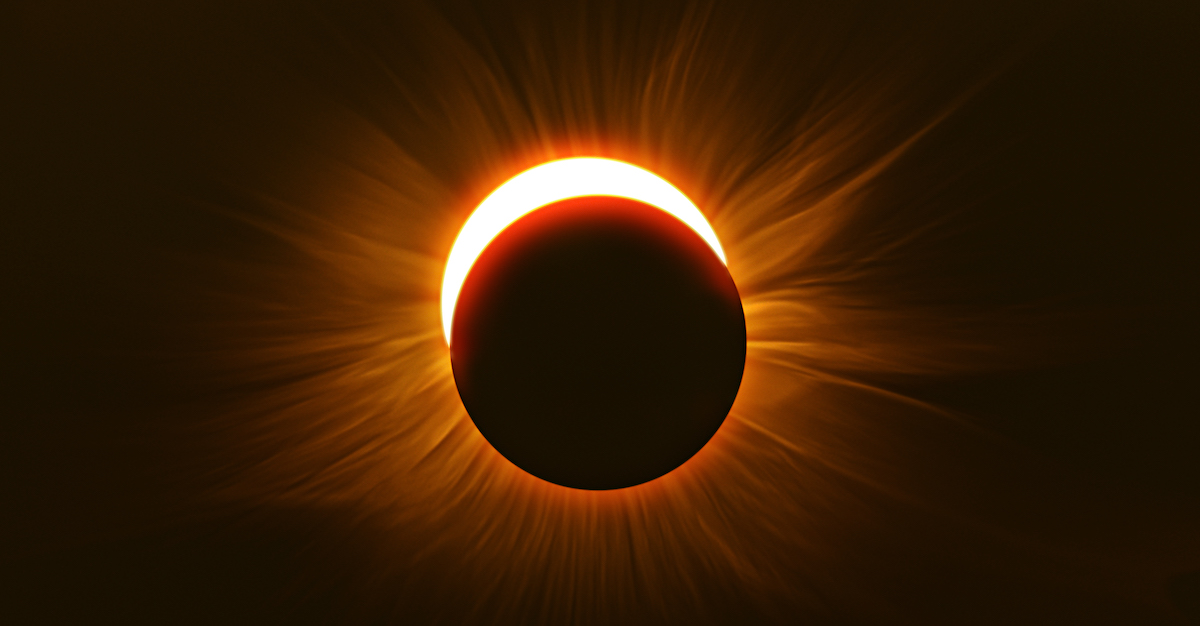éclipse solaire ou lunaire – As solar or lunar eclipses take center stage, this opening passage beckons readers into a world crafted with good knowledge, ensuring a reading experience that is both absorbing and distinctly original.
Eclipses, celestial phenomena that have captivated humanity for millennia, occur when one celestial body temporarily obscures another. Whether it’s the sun being eclipsed by the moon or the moon being eclipsed by the Earth’s shadow, these astronomical events have profound scientific, cultural, and historical significance.
Definition and Types of Eclipses

An eclipse occurs when one celestial body moves into the shadow of another. The most common types of eclipses are solar and lunar eclipses, which involve the Sun, Moon, and Earth.
Types of Eclipses
There are three main types of solar eclipses and two main types of lunar eclipses:
- Total Solar Eclipse: The Moon completely blocks the Sun, creating a brief period of darkness during the day.
- Partial Solar Eclipse: The Moon partially blocks the Sun, resulting in a crescent-shaped shadow on the Earth.
- Annular Solar Eclipse: The Moon passes directly in front of the Sun, but is too far away to completely block it, leaving a ring of sunlight visible around the Moon.
- Total Lunar Eclipse: The Earth passes directly between the Sun and Moon, blocking the Sun’s light from reaching the Moon, which turns a reddish-orange color.
- Partial Lunar Eclipse: The Earth partially blocks the Sun’s light from reaching the Moon, causing a portion of the Moon to appear darker.
| Type of Eclipse | Cause | Example |
|---|---|---|
| Total Solar Eclipse | Moon completely blocks Sun | 2017 Great American Solar Eclipse |
| Partial Solar Eclipse | Moon partially blocks Sun | 2021 Partial Solar Eclipse over Antarctica |
| Annular Solar Eclipse | Moon passes in front of Sun but is too far to completely block it | 2023 Annular Solar Eclipse over Australia |
| Total Lunar Eclipse | Earth passes between Sun and Moon | 2022 Total Lunar Eclipse over North America |
| Partial Lunar Eclipse | Earth partially blocks Sun’s light from Moon | 2021 Partial Lunar Eclipse over Europe |
Causes and Occurrence of Eclipses
Eclipses occur due to the alignment of the Earth, Moon, and Sun. During a solar eclipse, the Moon passes directly between the Sun and the Earth, blocking the Sun’s light from reaching us. In contrast, a lunar eclipse happens when the Earth moves between the Moon and the Sun, casting its shadow on the Moon.
Conditions for an Eclipse
For an eclipse to occur, specific conditions must be met:
– Alignment: The Sun, Earth, and Moon must be precisely aligned on a straight line.
– Orbital Plane: The Moon’s orbit around the Earth and the Earth’s orbit around the Sun must lie in the same plane.
– Distance: The Moon must be at the correct distance from the Earth to either block the Sun’s light or fall within the Earth’s shadow.
Frequency and Predictability
Eclipses occur with varying frequency depending on the type. Solar eclipses happen more frequently than lunar eclipses. Both types of eclipses are predictable, and their timing and locations can be calculated in advance using astronomical models.
Effects and Significance of Eclipses
Eclipses, celestial events that occur when one celestial body passes into the shadow of another, have profound effects on both the natural world and human culture. Their scientific impact ranges from influencing tides to affecting the Earth’s atmosphere, while their cultural significance spans religious beliefs, historical events, and artistic inspiration.
Scientific Effects, éclipse solaire ou lunaire
During a solar eclipse, the Moon’s shadow falls on Earth, blocking the Sun’s rays. This sudden drop in solar radiation can cause a temporary decrease in temperature and a noticeable dimming of the sky. Solar eclipses also trigger a phenomenon known as the “eclipse effect,” where the Earth’s ionosphere and atmosphere respond to the change in solar radiation, leading to changes in atmospheric pressure, wind patterns, and even electrical activity.
Lunar eclipses, on the other hand, occur when the Earth’s shadow falls on the Moon. While not as dramatic as solar eclipses, they still affect the Moon’s surface temperature and can cause subtle changes in Earth’s tides.
Cultural and Historical Significance
Eclipses have played a significant role in human history and culture. In many ancient civilizations, eclipses were seen as omens or signs from the gods. Some cultures believed eclipses to be harbingers of disaster or misfortune, while others viewed them as opportunities for spiritual renewal and purification.
Whether it’s a solar or lunar eclipse, these celestial events captivate us with their awe-inspiring beauty. Just like the retired numbers of the legendary Lakers franchise, lakers retired numbers , which serve as a testament to the greatness of the players who wore them, eclipses remind us of the vastness and wonder of the universe.
Eclipses have also influenced religious practices and beliefs. For example, in Hinduism, the solar eclipse is associated with the god Rahu, who is believed to swallow the Sun. In Chinese culture, lunar eclipses are associated with the mythical “Moon Rabbit,” which is said to protect the Moon from a celestial dragon.
Observation and Safety Precautions

Observing solar and lunar eclipses can be a thrilling experience, but it’s crucial to prioritize safety. Direct viewing of the Sun without proper protection can lead to severe eye damage, including permanent blindness.
To safely observe solar eclipses, specialized eclipse glasses are essential. These glasses are designed with filters that block harmful ultraviolet (UV) and infrared (IR) radiation. It’s important to ensure that the glasses meet the international safety standard ISO 12312-2.
Eclipse Glasses and Filters
Eclipse glasses come in various forms, including:
- Cardboard glasses: Disposable and inexpensive, these glasses are suitable for a single use.
- Plastic glasses: More durable than cardboard glasses, they can be reused multiple times.
- Goggles: Provide a wider field of view and better protection against stray light.
In addition to eclipse glasses, solar filters can be attached to telescopes or binoculars. These filters must be certified to block at least 99.99% of sunlight to ensure safe viewing.
Tips for Capturing Stunning Eclipse Photographs
To capture stunning eclipse photographs, consider the following tips:
- Use a tripod: A stable tripod is essential to minimize camera shake and ensure sharp images.
- Set manual exposure: Adjust the camera’s aperture, shutter speed, and ISO manually to optimize the exposure.
- Use a solar filter: Protect your camera’s sensor from damage by using a solar filter designed for photography.
- Compose creatively: Experiment with different compositions to create unique and memorable eclipse images.
Scientific and Cultural Impact of Eclipses

Eclipses have played a pivotal role in scientific advancements and cultural expressions throughout history.
Scientific Advancements
Eclipses have enabled scientists to:
– Understand celestial mechanics: Eclipses provide opportunities to study the precise movements of the Sun, Moon, and Earth, refining our understanding of celestial orbits and gravitational interactions.
– Determine astronomical distances: By observing eclipses, scientists can calculate the distances between celestial bodies with remarkable accuracy, contributing to our knowledge of the solar system’s dimensions.
– Test theories of relativity: Eclipses have served as crucial tests for Einstein’s theory of general relativity, validating its predictions and revolutionizing our understanding of space and time.
Cultural Influence
Eclipses have deeply influenced art, literature, and music:
– Art: Eclipses have inspired countless works of art, from ancient cave paintings to modern photography, capturing the awe and wonder associated with these celestial events.
– Literature: Eclipses have been featured in literary works for centuries, serving as metaphors for transformation, change, and cosmic significance.
– Music: Eclipses have found expression in musical compositions, evoking emotions ranging from wonder to fear, and reflecting the cultural beliefs and traditions associated with these phenomena.
Famous Works Inspired by Eclipses
– “Eclipse” by Edvard Munch (1882): A painting depicting the eerie atmosphere and emotional intensity of a solar eclipse.
– “The Great Eclipse” by Mark Twain (1884): A short story exploring the psychological and societal impact of a total solar eclipse.
– “Eclipse Symphony” by Philip Glass (1999): A musical composition that captures the grandeur and awe-inspiring nature of an eclipse.
Future Eclipses and Predictions: éclipse Solaire Ou Lunaire

Solar and lunar eclipses are celestial phenomena that continue to fascinate and intrigue astronomers and the public alike. As we look to the future, the prediction of upcoming eclipses holds significant importance in scientific research and astronomical observations.
The accurate prediction of eclipses is made possible through a combination of astronomical observations, mathematical calculations, and computational modeling. Astronomers utilize precise ephemerides, which are detailed records of the positions and motions of celestial bodies, to determine the timing and visibility of future eclipses.
Upcoming Eclipses
Upcoming solar and lunar eclipses scheduled to occur within the next few years include:
- Solar Eclipse: April 8, 2024 (Total, visible in Mexico, the United States, and Canada)
- Lunar Eclipse: September 27, 2023 (Total, visible in Europe, Africa, and Western Asia)
- Solar Eclipse: October 14, 2023 (Annular, visible in North America, South America, and Africa)
- Lunar Eclipse: March 13, 2025 (Total, visible in North America, South America, and Europe)
These eclipses provide valuable opportunities for astronomers to study the Sun and Moon’s behavior, including their physical properties, atmospheric conditions, and the dynamics of their orbits.
Significance in Astronomical Research
Future eclipses hold immense significance in advancing astronomical research. They offer unique opportunities to:
- Test Theories of Gravity: Eclipses provide a natural laboratory to test theories of gravity, such as Einstein’s theory of general relativity.
- Study the Solar Corona: During a total solar eclipse, the Sun’s faint outer atmosphere, known as the corona, becomes visible, allowing astronomers to study its structure and dynamics.
- Probe the Lunar Interior: Lunar eclipses allow astronomers to analyze the Moon’s surface temperature and composition, providing insights into its internal structure.
- Observe Exoplanets: Eclipses can be used to detect and characterize exoplanets, or planets outside our solar system, by studying the dimming of starlight as an exoplanet passes in front of its host star.
By harnessing the power of future eclipses, astronomers can deepen our understanding of the cosmos and unravel the mysteries that surround our celestial neighbors.
Closure

From the scientific understanding of their causes and effects to the cultural practices and beliefs associated with them, eclipses have left an indelible mark on our collective human experience. As we continue to study and observe these celestial wonders, they continue to inspire awe, curiosity, and a sense of connection to the cosmos.
FAQ Compilation
What is the difference between a solar and a lunar eclipse?
A solar eclipse occurs when the moon passes between the sun and the Earth, blocking the sun’s light. A lunar eclipse occurs when the Earth passes between the sun and the moon, casting a shadow on the moon.
How often do eclipses occur?
Eclipses occur relatively frequently, but total solar eclipses are rare. On average, there are about two solar eclipses and two lunar eclipses each year, but not all of them are visible from every location on Earth.
Are eclipses safe to watch?
It is never safe to look directly at the sun during a solar eclipse, even with sunglasses. Special eclipse glasses or solar filters must be used to protect your eyes from harmful UV radiation.